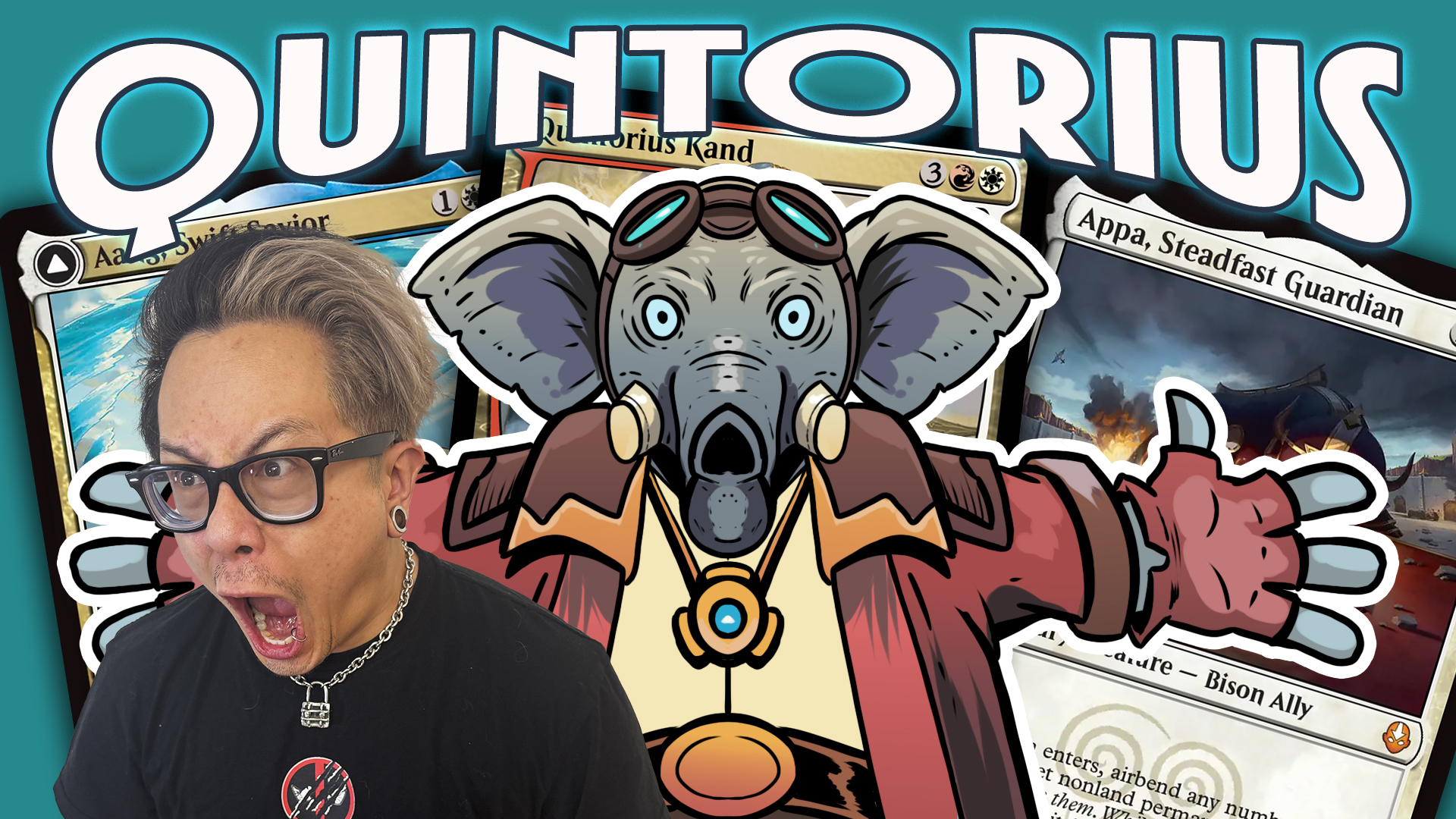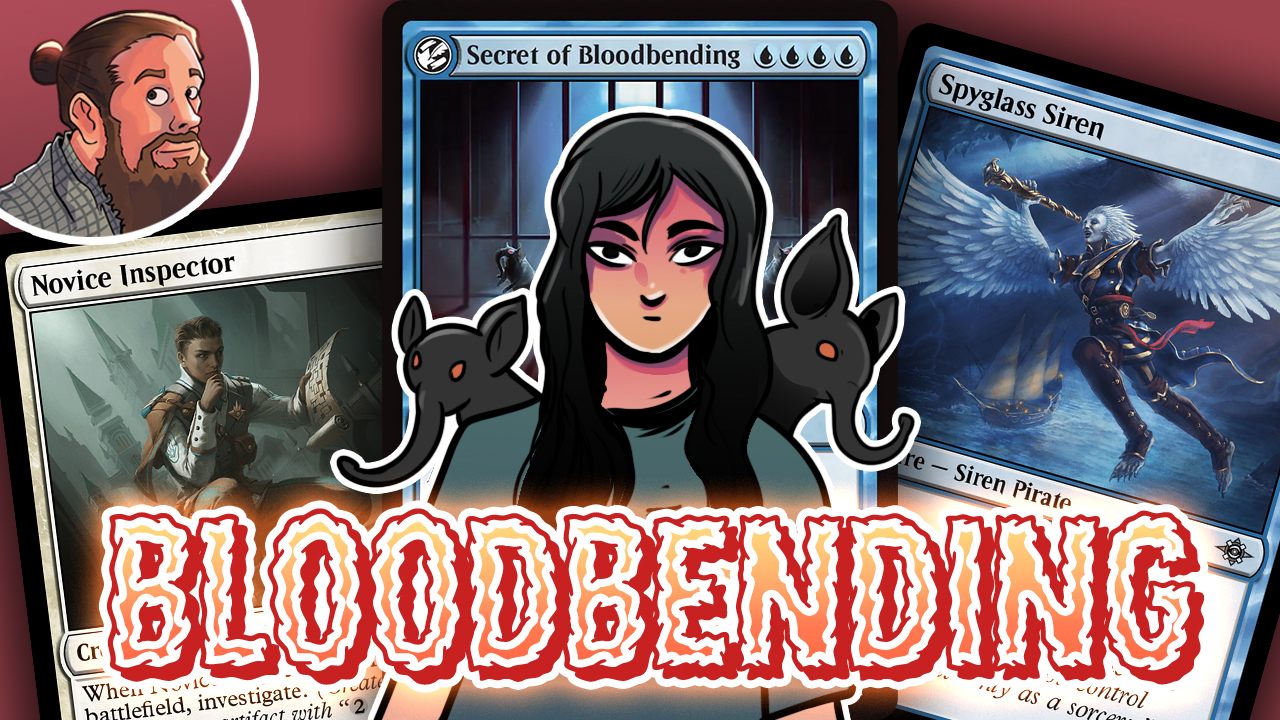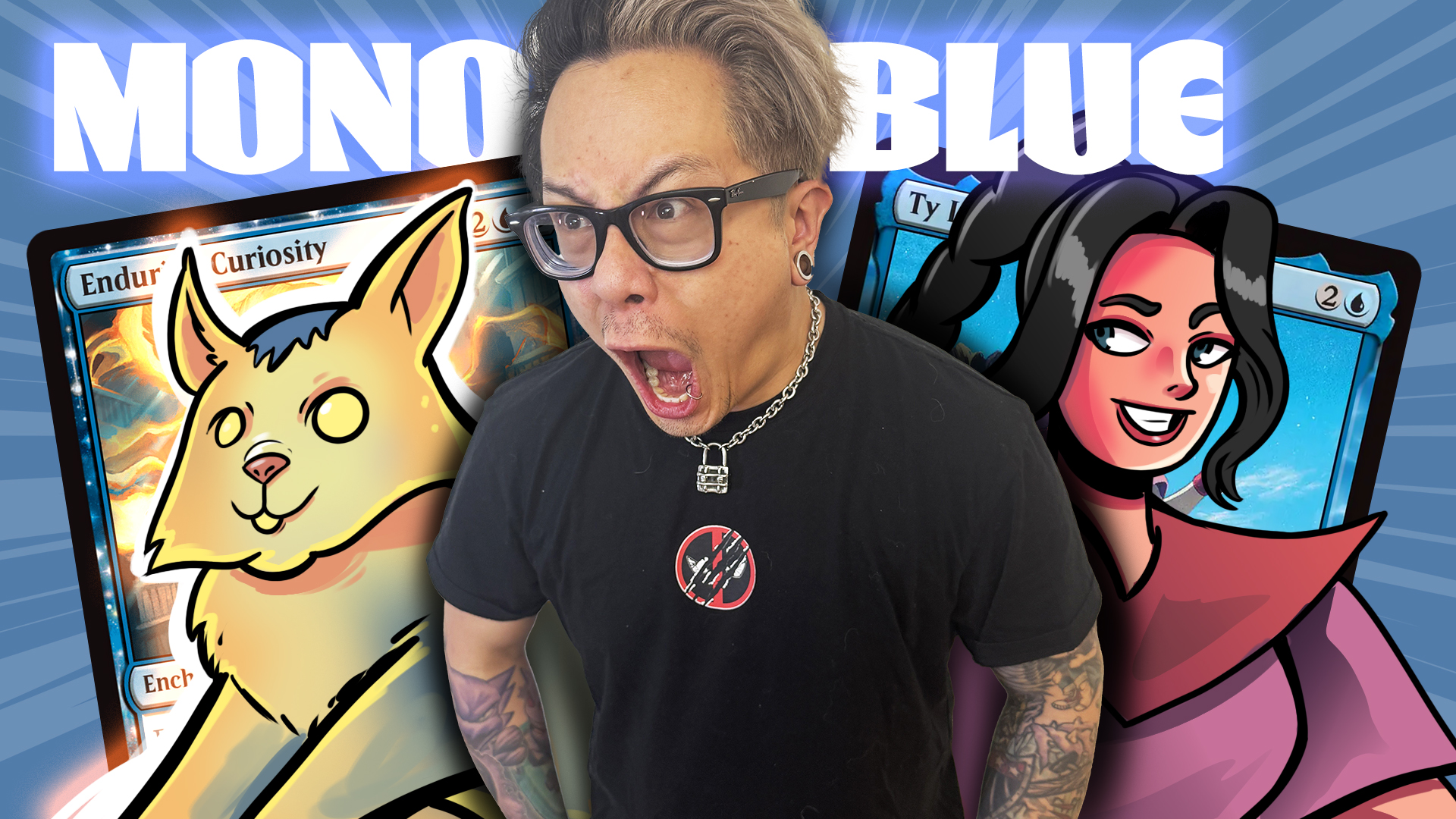Modal Double-Faced Cards in Commander: You Should Be Playing More
I've been high on modal double-faced cards (MDFCs) ever since they were first previewed. Now, after a few weeks of getting to build and play with these cards in Commander, they've somehow exceeded my expectations and have had a subtle but large impact on how I build Commander decks. At first glance, it's easy to miss the power of MDFCs. After all, they are mostly (slightly) overcosted spells on one side along with a land (which often comes into play tapped and always only taps for a single color of mana) on the other. Why is combining together two average or, in some cases, underpowered effects changing the way I build Commander decks? The answer is flexibility.

Modal cards, which we've had in Magic for decades, are almost always a bit better than they look at first glance since they offer options. Take a card like Izzet Charm, for example. It's a two-mana Spell Pierce combined with a two-mana Shock (that can't even hit players) combined with a two-mana Faithless Looting (without flashback). All of the modes on the card are strictly worse versions of other cards in existence. Still, Izzet Charm sees play all the way back to Modern and shows up in some Commander decks because the power of Izzet Charm is based on its flexibility, not its efficiency. Let's say you have a Spell Pierce in your hand. If you need to counter a planeswalker or another non-creature spell, it's clearly better than Izzet Charm since it only costs one mana, but if your opponent is drawing cards with a Dark Confidant or has so much mana they can easily pay two extra for their spell, it's stuck rotting in your hand. Meanwhile, Izzet Charm can still counter that planeswalker (admittedly in a much less efficient way since it costs twice as much as Spell Pierce does), but it can also kill the Dark Confidant and, when the other modes are dead, potentially improve your hand by looting away some extra lands, Faithless Looting–style.



MDFCs do essentially the same thing, but the impact of their flexibility is felt as much during the deck-building process as it is during gameplay. In essence, every MDFC is a slightly overcosted spell combined with a slightly underpowered land (thanks to coming into play tapped or costing three life to come into play untapped, in the case of the mythic MDFC cycle, and only tapping for one color of mana). To understand how having two underpowered effects stapled together is changing how I build Commander decks, we have to look at a game of Commander from a more meta perspective.
What is the easiest way to lose a game of Commander? I'd argue it's either being mana flooded (if you've ever been the player at the table who is empty-handed and top decks lands for a couple turns in a row, you'll know what I mean) or mana screwed (see: basically every Commander Clash game from Crim's perspective). If we assume that both mana flood and mana screw are things that we'd like to avoid in order to have a fun game of Commander (and maybe even a chance at winning the game), then adding more MDFCs to your deck during deck building is the perfect solution to the problem.
The true power of MDFCs in Commander is that since they are both lands and spells, depending on what you need at any given point in the game, adding MDFCs can decrease your chances of being mana screwed and mana flooded. Are you in the empty-handed top-deck situation? While the spell half of an MDFC might not be super efficient, drawing an MDFC for your turn is about a thousand times more satisfying and productive than drawing a random land is. Are you mana screwed and desperately hoping to top-deck a land? While it might be annoying that the MDFC you draw comes into play tapped, it's much better than drawing a random spell that doesn't produce mana at all. With careful deck building, MDFCs increase both the number of lands in your deck (thereby preventing mana screw) and the number of spells in your deck (thereby preventing mana flood), which is incredibly powerful.



Traditionally, when I build a Commander deck, I play 37 lands by default. While there is some variance (super-low-curve aggressive decks might have slightly less, while decks built on ramping or other land synergies might have slightly more), probably 80% of all the Commander decks I build have 37 lands. Now, in a world of MDFCs, my deck-building technique has changed greatly. Especially for mono-colored or two-colored decks (we'll talk more about three-plus-color decks in a minute), my goal now is to cut five or six lands (mostly basic lands or utility lands that only add one color of mana—don't aggressively cut dual lands from two-color decks) and about three non-land spells and replace them with eight or nine MDFCs.
The end result is that rather than having 37 lands in my Commander decks, in a post-MDFC world, I generally have 31–32 "real" (non-MDFC) lands, but thanks to the eight or nine MDFCs, the total number of lands in my decks actually increases to 40 or 41. By using this technique, we shift the math of the game in our favor. Having fewer "real" lands means we're less likely to have games where we flood out. Having more total lands means we're less likely to have games where we are mana screwed.



I mentioned a moment ago that this mostly applies to mono-colored and two-colored decks. So why don't we just overload our three-, four-, and five-color decks with MDFCs too? The answer here is that in decks that are three or more colors, MDFCs have an additional drawback: they only add a single color of mana. While we've been talking a lot about mana flood and mana screw, there is another way to potentially do nothing in a game of Commander: not having the right colors of mana to cast your spells. In a mono-color deck, it's impossible to be color screwed (assuming you're not playing an absurd amount of colorless lands for some reason), and in a two-color deck, it's pretty unlikely that you'll get color screwed with a properly built mana base featuring a reasonable number of dual lands and other types of ramp / fixing. On the other hand, in three-, four-, or five-color decks, playing any non-basic land that only taps for a single color of mana is a big cost. Generally speaking, in decks that are three or more colors, you want to play almost all dual lands, along with enough basic lands to support whatever ramp is in your deck (Land Tax, Kodama's Reach, Rampant Growth, et al.). The end result is that in decks that are three or more colors, it's significantly harder to cut five or six lands and replace them with MDFCs while still having a mana base that is stable enough to avoid color screw and support your ramp. In these decks, some MDFCs are still worth playing, but rather than just running as many as possible to avoid mana flood and mana screw like in mono-colored and two-colored decks, only the best and most impactful of the MDFCs will make the cut.
So which MDFCs are best? I actually made a video on the topic, which you can check out, but here are my rankings. The categories (always play, often play, rarely play) are based on mono-color and two-color decks. In three-plus-color decks, you'll almost never or rarely play all MDFCs and should pick and choose MDFCs from the "always play" category that are most impactful and best support the theme of your deck, rather than just running them all.
White



- Always Play: Emeria's Call, Ondu Inversion, Kabira Takedown, Sejiri Shelter.
- Often Play: Skyclave Cleric
- Rarely Play: Makindi Stampede
As for the white MDFCs, Emeria's Call and Ondu Inversion are the most evergreen of the bunch. Regardless of whether you are more aggro or controlling, they should be in your deck. Kabira Takedown and Sejiri Shelter are a bit more situational—they might not be worthwhile if you're playing a deck with almost no creatures (which would be rare for a white-based deck), but they are worth playing in just about every deck with a reasonable number of creatures. Skyclave Cleric I mostly view as a lifegain spell, and I do try to have some incidental lifegain in all of my Commander decks. While it isn't especially powerful, gaining two life right away and some more when it chump blocks means it is good enough in a reasonable number of decks. Meanwhile, Makindi Stampede is the worst of the white MDFCs. Ut is an easy inclusion if you are a go-wide aggro or token deck, but it's not worth a slot if you're a go-tall equipment deck (which is a popular white strategy in Commander).
Blue



- Always Play: Sea Gate Restoration, Glasspool Mimic, Jwari Disruption
- Often Play: Silundi Vision, Umara Wizard
- Rarely Play: Beyeen Veil
Blue has three MDFCs that I view as auto-includes. Sea Gate Restoration is the best of the bunch, as a land that can also be an extremely powerful card-draw spell in the late game. In theory, there could be decks that don't want Glasspool Mimic (ones that have almost no creatures), but even with just a handful of creatures worth copying in your deck, it's significantly better than the Island it will likely replace. As for Jwari Disruption, it's possible I'm overrating it because I love getting people with Force Spikes and Mana Tithes. (There is psychological value to countering an opposing spell with a Force Spike since they are so easy to play around, yet it's not worth playing around them in Commander because they aren't heavily played, which makes getting your powerful spell hit by Jwari Disruption especially devastating.)
As for the rest of the bunch, Silundi Vision is listed as an often play just because you need to be a reasonably spell-heavy deck for it to work. While most blue decks will have enough spells to want Silundi Vision, you probably won't if you're playing some sort of Simic creature deck. Meanwhile, Umara Wizard isn't a horrible creature since it is big enough to take down quite a few Commander-playable creatures in combat and the ability to gain flying is relevant. Would I rather top deck it than a land while I'm empty-handed? For sure, although it will be far from the best draw in the deck. Finally, I'm not sure any deck wants Beyeen Veil. It could be worth considering in some sort of Fog strategy, in a playgroup with a lot of go-wide aggro decks, but in the dark, it just isn't powerful enough for me to want to play.
Black



- Always Play: Agadeem's Awakening, Hagra Mauling, Pelakka Predation.
- Often Play: Malakir Rebirth, Zof Consumption.
- Rarely Play: Blackbloom Rogue
Hagra Mauling is the best black MDFC, offering a way to sneak an extra removal spell into your deck in a land slot. If you have literally no creatures in your deck, you can skip out on Agadeem's Awakening, but even with a small number of creatures, it's worth a slot in your deck. You don't have to reanimate five different creatures for it to be good. Even just one or two makes it extremely powerful. Meanwhile, Pelakka Predation shows off one of the often missed aspects of MDFCs that I really love: since they come attached to lands, MDFCs allow you to sneak in effects that you otherwise wouldn't normally play in a Commander deck (in this case, a Thoughtseize-style targeted discard spell). No one expects Thoughtseize in Commander, but when you use Pelakka Predation to steal a finisher or wrath from your opponent's hand, you'll be happy you have it instead of a Swamp.
As for the lower-tier black MDFCs, Malakir Rebirth is a card I really like, but you do need to have quite a few creatures in your deck to make it worthwhile. It's an auto-include in creature-heavy black decks. In creature-light decks, it's unplayable. Zof Consumption is the black MDFC that I'm most uncertain about. On one hand, it offers incidental lifegain in the land slot, which I like. On the other hand, six mana to drain for four isn't especially exciting. It does go up in value in decks that have lifegain synergies (Vito, Thorn of the Dusk Rose or Karlov of the Ghost Council, for example). Finally, I view Blackbloom Rogue as close to unplayable outside of Rogue decks. A 2/3 just isn't big enough to have a meaningful impact on most Commander games, even with the upside of potentially growing in power if an opponent's graveyard is full.
Red



- Always Play: Shatterskull Smashing, Valakut Awakening, Kazuul's Fury, Song-Mad Treachery.
- Often Play: Spikefield Hazard, Akoum Warrior.
- Rarely Play:
All of the red MDFCs are strong enough that they all into the always- or often-play group. Shatterskull Smashing and Valakut Awakening are the best of the bunch. It's hard for removal or a self–Wheel of Fortune to ever be bad in a Commander deck. Kazuul's Fury does require you to have creatures in your deck, but that's usually not a problem for red-based decks. Meanwhile, Song-Mad Treachery is a card I really like for a reason similar to Pelakka Predation: people don't expect non-sacrifice decks to have Threaten effects, which means that Song-Mad Treachery can lead to some massive blowouts by stealing an unsuspecting opponent's best creature and smashing them with it.
In the often-play category, we have Spikefield Hazard and Akoum Warrior. The Warrior is big enough that it can tangle with things in combat, which generally makes it better than a basic land. Meanwhile, Spikefield Hazard is a bit playgroup dependent. It's great if you have someone in your play group who likes playing mana-dork decks with things like Birds of Paradise and Llanowar Elves. If everyone you play against is comboing off or using non-creature ramp to play massive threats, then one damage isn't enough to matter. In the dark, I'll often put it in my decks, but in a known playgroup, its value is based on your opponents' play styles.
Green



- Always Play: Bala Ged Recovery, Tangled Florahedron, Turntimber Symbiosis, Khalni Ambush, Kazandu Mammoth.
- Often Play:
- Rarely Play: Vastwood Fortification.
We saved the best for last. Thanks to the strength of its uncommons, Green has five MDFCs that are worth playing in almost every deck. Bala Ged Recovery is basically an Eternal Witness that trades in a 2/1 body for being a land. It should end up as a true staple of green Commander decks. Tangled Florahedron is similar. Green decks already tend to want mana dorks, so having one in the land slot is great. Turntimber Symbiosis comes into play untapped when needed, further lowering its opportunity cost, and since green decks tend to have big finishers like Craterhoof Behemoth, being able to dig seven cards deep in your deck to find them is quite powerful. Speaking of big creatures, if you are the rare green deck that doesn't have any, Khalni Ambush drops from great to medium or even bad, but since big creatures are more or less green's thing, it's hard to imagine too many green decks that won't get value out of the instant-speed fight spell. Finally, Kazandu Mammoth is a fairly on-curve creature that works really well with green ramp spells that tutor extra lands onto the battlefield.
On the other hand, Vastwood Fortification might be the single least powerful of all the MDFCs for the Commander format. While it is probably good enough in a deck that is built on the theme of +1/+1 counters, outside of this very specific archetype, adding a single +1/+1 counter to a creature just isn't enough value (even at instant speed) to make me add another tapped land to my deck, especially considering that green already has five MDFCs that I really want to be playing.
Wrap-Up



As you can see, every color has at least three (and in some cases, four or five) MDFCs that are good enough to play in almost every deck. This means that in every two-color combination, you should be able to find a least six really strong MDFCs, and if you reach down into the "often play" category, you should be able to find eight or nine that are worth putting in your deck.
As I mentioned before, the most powerful way to build Commander decks with MDFCs is to cut five or six lands (usually basic lands or other utility lands that tap for one color of mana) along with two or three spells and replace them with MDFCs so that you end up with something like 31 or 32 "real" lands but 40 or 41 total lands. This decreases your odds of being mana flooded and of being mana screwed all at once, which is incredibly powerful.
For decks with three or more colors, where you might only be able to afford a small number of MDFCs since you'll need most of your lands to either be basics (for ramping / tutoring purposes) or tap for multiple colors of mana, the best MDFCs are Bala Ged Recovery (seriously, if you have green mana in your deck, play this card), Valakut Awakening, Hagra Mauling, and Ondu Inversion, along with the mythic cycle, which is almost always good if you can afford another land that only taps for a single color of mana.
As for the main drawback of MDFCs (coming into play tapped), it is a concern, but not a huge one. If you're playing CEDH and trying to win on turn three it's a massive problem because you need essentially every land to come into play untapped, but in more casual games the drawback is negligible especially compared to the upside of having powerful spells in your land slot. While you do need to make sure you have a reasonable number of untapped lands in your deck, between dual lands and basic lands this shouldn't be a problem. Plus, you can always replace some tapped utility lands with MDFCs to keep the total number of tapped lands in check. Yes, building with eight or nine MDFCs will increase the number of lands you have that will come into play tapped, but it shouldn't increase it enough to be problematic, especially compared to the consistency and power you gain from the spell-land hybrids.
Conclusion
Anyway, that's all for today. The bottom line is that you should be playing more MDFCs in your Commander decks. While their power is subtle, they offer a way to shift the deck-building math in your favor, reducing your odds of two of the worst outcomes in a game of Commander: being mana flooded or mana screwed. I expected the MDFCs to be good during preview season, and now that I've been able to build and play with them, they have exceeded my expectations for the Commander format specifically. Put more of them in your deck. You won't be sorry!
Have you been building and playing with MDFCs in Commander? How has your experience been? How many have you been playing? How many real and total lands have you had in your post–Zendikar Rising Commander decks? Let me know in the comments! As always, leave your thoughts, ideas, opinions, and suggestions, and you can reach me on Twitter @SaffronOlive or at SaffronOlive@MTGGoldfish.com.













